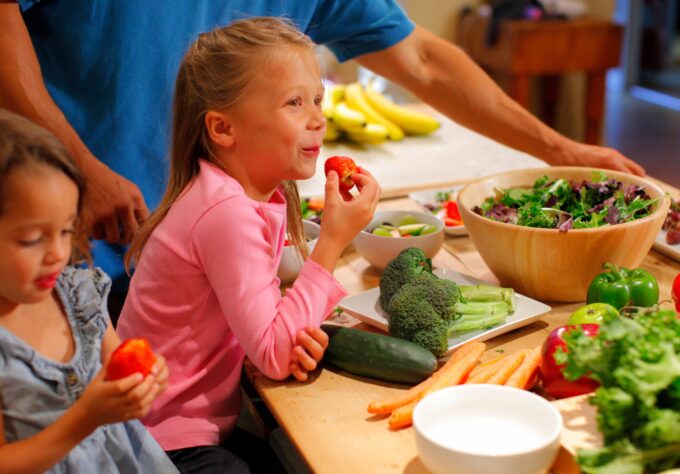When selecting a snack, it is important to think about a few key factors including timing, hunger level, portion size and nutritional value.
Timing
As a rule of thumb, it is helpful not to go more than about 4 hours without eating, even if it is something small. Long periods of time without eating can increase hunger later in the day, making it challenging to practice portion control when you finally get a chance to eat. It is also very challenging to make healthy choices when you are feeling extremely hungry. Snacks help to bridge the gap between meals and can help lessen hunger to an appropriate level prior to the next meal.
Be cautious of grazing! Grazing is a term used to describe constant snacking. It is important to allow time (approximately 2-4 hours) between meals and snacks to give the digestive system a break. Most children should aim for no more than 3 meals and 1-2 healthy snacks per day. Your dietitian can provide specific recommendations that are most appropriate for your child.
Avoid snacking late at night. It is typically recommended to allow at least 2 hours after eating before going to bed to support good digestion. Eating late at night or right before bed can also lead to weight gain over time since our body does not have the opportunity to burn or use the calories (energy) provided by food late at night. Our bodies are much more efficient at using energy from food earlier in the day. If hunger before bed is a concern, be sure to select something light such a piece of fruit, raw veggies, or small glass of milk. Going to bed a little earlier can also help reduce the need for evening snacks.
Hunger Level
Before reaching for a snack, think about why you are doing so. Is your body signaling to you that it is time to eat? Physical signs of hunger may include hunger pains in the stomach and grumbling in your belly.
Sometimes our minds can trick us into thinking we are hungry if we are feeling bored, sad, nervous, excited, scared, mad or feeling other emotions. Seeing tempting foods at home may also trick us into thinking we need something to eat. It is helpful to keep a healthy home environment by limiting the availability of tempting foods at home. This makes it much easier to make healthy food choices.
Additionally, it is very easy to confuse thirst for hunger. Our bodies do not do a great job of letting us know we are thirsty until we are dehydrated. At this point, we may notice dry and cracked lips as well as a dry mouth. Be sure to drink plenty of water throughout the day to ensure adequate hydration! If you are unsure if you are truly hungry or not, try drinking a full glass of water or two before having a snack.
Portion Size
Think about snacks as “mini meals.” Snacks should be smaller in size compared to your meals. Pay attention to food labels on packaged foods to identify what one serving size is and be sure not to exceed this recommendation. However, keep in mind that this recommended serving size may not be appropriate for younger children. MyPlate | U.S. Department of Agriculture is a great resource for identifying age-appropriate portion sizes for children.
Avoid having a bowl of cereal or a sandwich for a snack as these items are often considered to be appropriate for a whole meal. See below for a list of healthy and filling snack options!
Nutritional Value
Protein and fiber are two nutrients that help to fill us up the most, especially when they are combined. This means, it requires smaller amounts of protein-rich or fiber-rich foods to make us feel full. These nutrients also help to keep us feeling satisfied longer.
Limit processed snack items such as chips, veggie straws, crackers, cookies, goldfish, pretzels, and gummy fruit snacks. These items are very low in protein and fiber, and therefore not very filling or satisfying. They are also very low in other nutrients including a variety of vitamins and minerals. It is perfectly okay to have these items every once in a while, but try not to select them every day.
Healthy Snack Options
Protein rich sources:
- 1-2 Tablespoons of nut butter
- Greek yogurt
- Hard boiled egg
- ¼ cup nuts
- Roasted soybeans
- 1 oz of lean, low-sodium beef jerky
- 1 serving of non-processed cheese, 1-2 slices of chicken or turkey
Fiber rich sources:
- Fruit
- Vegetables
- Plain or light popcorn
- 1 serving of whole grain crackers
- Granola bar (3 grams of fiber or more, and less than 10g of sugar) ¼ cup granola
Learn More
Smoothie 101: Nutritious & Delicious! (Nemours Blog)
Choosing the Best Yogurt for Kids (Nemours Blog)



